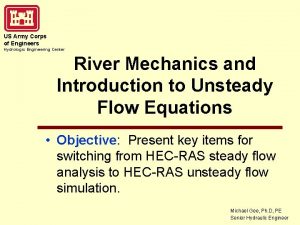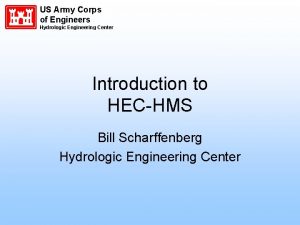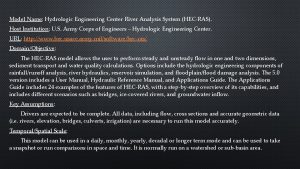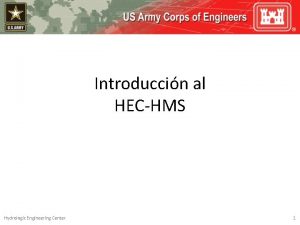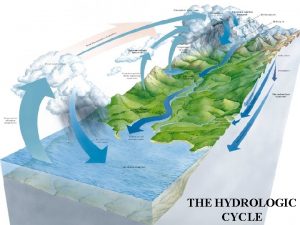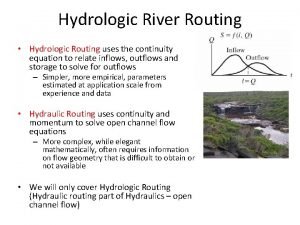Model Name Hydrologic Engineering Center River Analysis System



- Slides: 3

Model Name: Hydrologic Engineering Center River Analysis System (HEC-RAS). Host Institution: U. S. Army Corps of Engineers – Hydrologic Engineering Center. URL: http: //www. hec. usace. army. mil/software/hec-ras/ Domain/Objective: The HEC-RAS model allows the user to perform steady and unsteady flow in one and two dimensions, sediment transport and water quality calculations. Options include the hydrologic engineering components of rainfall/runoff analysis, river hydraulics, reservoir simulation, and floodplain/flood damage analysis. The 5. 0 version includes a User Manual, Hydraulic Reference Manual, and Applications Guide. The Applications Guide includes 24 examples of the features of HEC-RAS, with a step-by-step overview of its capabilities, and includes different scenarios such as bridges, ice-covered rivers, and groundwater inflow. Key Assumptions: Drivers are expected to be complete. All data, including flow, cross sections and accurate geometric data (i. e. rivers, elevation, bridges, culverts, irrigation) are necessary to run this model accurately. Temporal/Spatial Scale: This model can be used in a daily, monthly, yearly, decadal or longer term mode and can be used to take a snapshot or run comparisons in space and time. It is normally run on a watershed or sub-basin area.

Input Drivers: Flow Data and Geometric Data (river, reservoir, tributaries, elevation, bridges, cross sections, culverts, weirs, etc. ) must be provided by the user. Key Outputs: Depends on exactly what you are running, as there are many different options. Could include flow calculations, sediment transport, water quality, floodplain assessment, etc.

